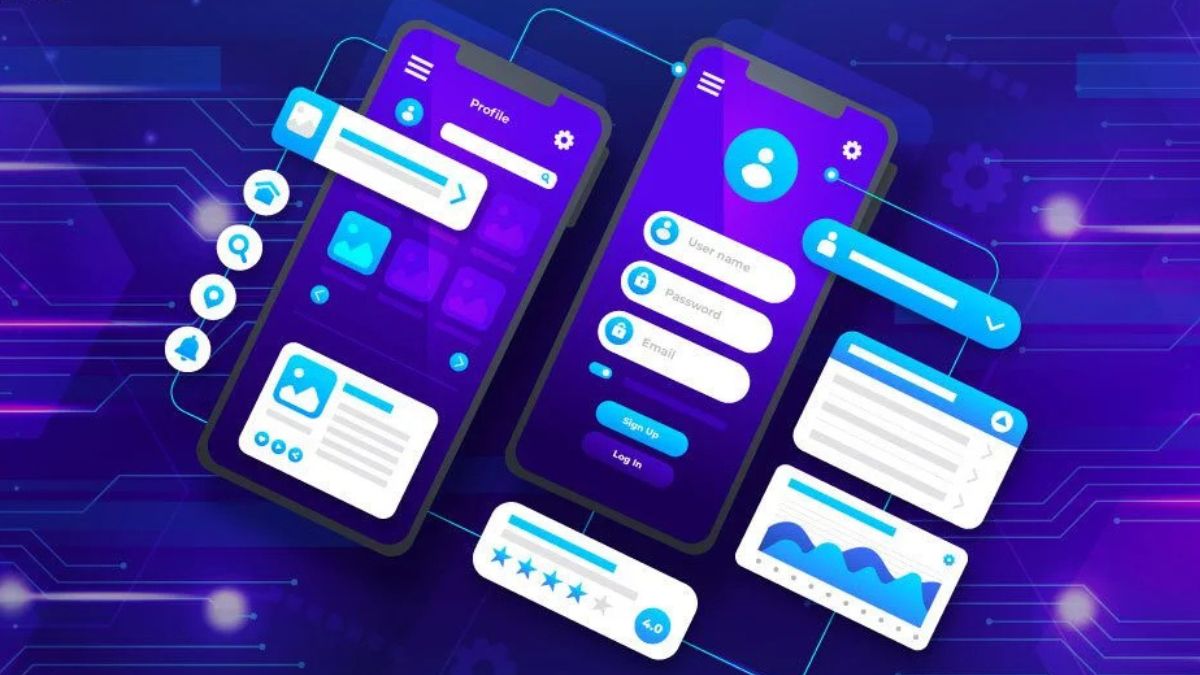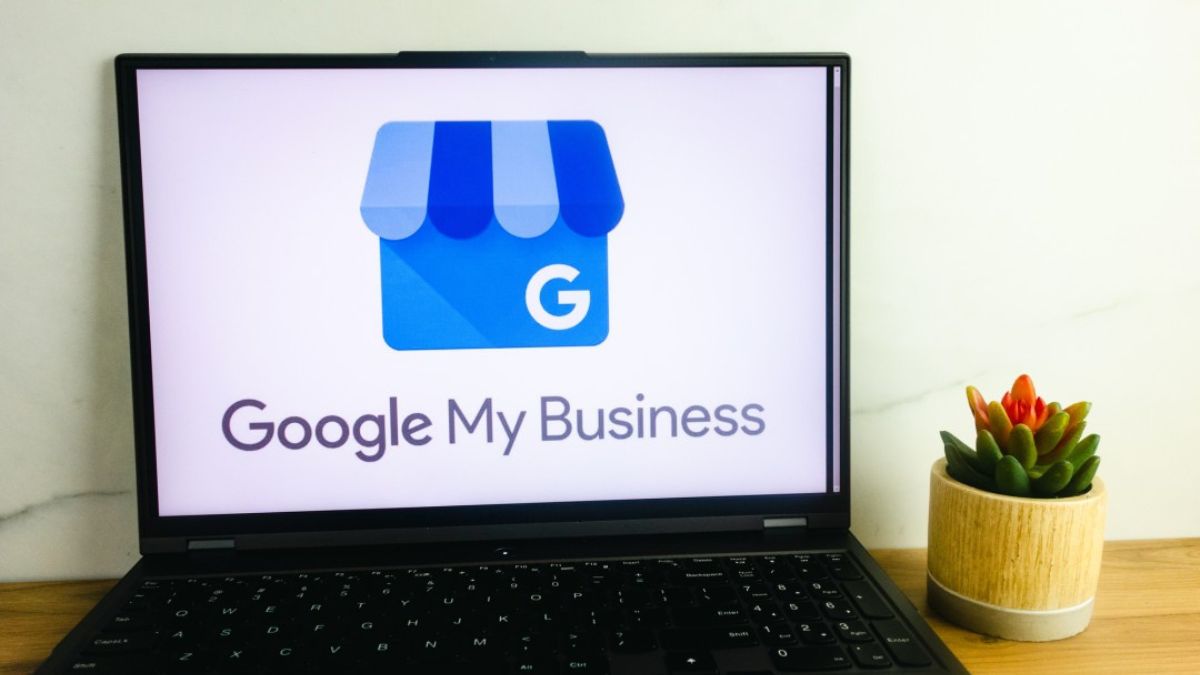BUSINESS
Long Range Proximity Sensors: How They Work and Their Industrial Applications

In relation to automation for industries, these proximity sensors are important since they help in identifying objects without contact, and therefore enhance the control, efficiency and accuracy of the automated systems. Recently, long-range proximity sensors are becoming more and more common because of their particular ability to identify objects from afar. Sensors of this type significantly improve safety measures in industries where rapid and precise object detection is needed over long distances. This article will establish the working principles of long-range proximity sensors, their applications, and the importance of industrial automation companies in employing these sensors to optimize processes. We will also discuss other essential components, for example, FRL unit manufacturers, that guarantee the proper functioning of the sensors.
What Are Long Range Proximity Sensors and How Do They Work
Long range proximity sensors are built for detecting the presence of objects from a longer distance than standard proximity sensors. These sensors function by producing electromagnetic fields that can be inductive, capacitive, or ultrasonic in nature. These sensors work by impulsing an electromagnetic field and then measuring its outbound reflection or disruption by an object. The object which the sensor is designed to recognize is in a designated area marked for detection, and this will lead to variation in the sensor’s signal which will be processed by the sensor and later trigger an action in the system. The long range inductive proximity sensors use inductive, capacitive, and ultrasonic sensors the most. All these technologies are helpful, but each of them is best suited for a particular application. Inductive sensors simply sense metal, capacitive sensors sense metals and non-metals, while ultrasonic sensors detect objects over large distances using sound waves.
The capacity of those sensors to recognize and monitor an object from a distance without having any physical interaction with them allows for effective and precise operations in different industrial settings. This makes them perfect candidates for use in systems where remote object monitoring is necessary such as in material handling or in safety systems. Their ability to operate correctly at these distances provides many advantages such as quicker response time and the automation of tasks that previously required the intervention of a person. This capacity highly enhances productivity and minimizes human errors which makes long range proximity sensors very important components in modern automated manufacturing environments.
Industrial Applications of Long Range Proximity Sensors
In industries where the distance to the object that needs to be detected is significant, long-range proximity sensors come in handy. These sensors also play an essential role in handling materials, being employed to detect packages and components on conveyors, which in turn makes it possible for the operations of sorting or motioning the goods within the warehouses to be conducted smoothly. Moreover on long range assembly lines, proximity sensors can sense the position of parts and products so that robotic arms together with the automated tools can be used to assemble them accurately. These sensors are also employed during materials inspection, quality control and packaging processes in order to ensure correct alignment and orientation of the product before proceeding to production.
These sensors assist in safety systems by supervising the presence of workers or equipment near hazardous zones. In the case that such breaches take place, these sensors are capable of activating alarms or stopping the operation of machines. They are essential in minimizing dangerous situations by recognizing objects or people who are overstepping and encroaching towards dangerous machinery or processes. The same type of long range proximity sensors are increasingly popular in robotics, CNC machines as well as in packaging systems where precise detection of the position and distance of objects is significant for the normal functioning of the machine. In robotics, these sensors guarantee accurate motions, in CNC machines, they control the processes, and in packing, they assist in sorting or packing the products, expanding productivity tremendously.
Benefits of Long Range Proximity Sensors in Industrial Automation
Efficiency, safety, and durability are enhanced with the use of long-range proximity sensors in industrial automation. These sensors aid in detecting objects without needing to come in contact with them, making the operations more accurate and eliminating manual intervention. With the proper utilization of long range proximity sensors, material handling, assembly lines, and packaging systems in various industries are completed more smoothly and quickly, thus increasing the overall system efficiency. They also enhance safety conditions by detecting the presence of objects or people in dangerous zones and automatically initiating predetermined safety protocols such as shutting down equipment or setting off alarm systems. These sensors are very robust and highly dependable when used under harsh industrial conditions since dust, moisture, and temperature fluctuations will have no adverse effects on their performance.
Moreover, long-range proximity sensors drastically reduce energy consumption through accurate object presence verification and optimizing system energy usage. The sensors also help reduce operational costs and increase productivity as there are fewer failures in the system and less damage to the machines. Additionally, since they do not require direct maintenance contact, there is less cost for maintaining the unit over time. These sensors help reduce the need for human contact and aid in meeting regulatory standards while ensuring effective performance across various industrial environments.
The Contribution of Auxiliary Devices to The Efficiency of Sensors
Long-range proximity sensors are crucial for industrial automation, but supporting devices such as FRL units (Filter, Regulator, and Lubricator systems) improve efficiency. Manufacturers of FRL units set out devices that allow air compressed systems to be clean, properly regulated, and lubricated, which is critical for the functioning of pneumatic sensors. Sensors function poorly when air quality is not up to standards due to the presence of unwanted substances or pressure. Instead of correctly detecting the sensor, the sensor may incorrectly lead to a system malfunction.
The inclusion of an FRL unit in the pneumatic system allows for proper dust, dirt, and moisture separation from the compressed air while controlling the air pressure and lubricating some components to avoid damage to the sensors and other parts. Supporting components like FRL units enhance the state of air conditions within the automation system, thus ensuring that long range proximity sensors are able to perform optimally, which contributes to the overall system’s performance, reliability, and lifespan. FRL unit integration is particularly useful for devices which require precision since dirt and impurities are captured before they are able to damage sensitive components. These supporting components are essential to enhancing the efficiency and effectiveness of the automation system by eliminating problems such as low quality air or inconsistent pressure.
Conclusion
In industrial automation, long-range proximity sensors are certainly a long-range tool with effective and reliable sightless object detection over long distances. They enhance productivity, safety, and accuracy in a wide range of industrial processes like material handling, assembly line work, packaging, and robotics. These sensors are essential for processes that need a high degree of precision, since they carry out these actions without any contact, which increases productivity while reducing reliance on manual labor. Businesses are able to accomplish the highest levels of automation with the minimal amount of lost time and maintenance by the integration of long-range sensors with supporting components like FRL units.
Achieving and maintaining high standards in modern industry relies on industrial automation companies as they implement the optimal combination of sensors and other core components. The application of these sensors increases the performance of industrial systems as well as increases the sustainability of the operation in the cost and maintenance economy of the automation system. Having high regard for the abilities of long-range proximity sensors gives one the opportunity to attain greater productivity and accuracy with low associated risks.
BUSINESS
The Benefits of Choosing a Quality Local Fuel Supplier

When it comes to powering your home or business, the quality of the fuel you use can have significant impacts not only on your equipment but on the broader community and the environment. Local fuel suppliers offer a wealth of benefits, from improved service quality to the preservation of regional economies. They also tend to have a more considerable commitment to sustainability and the communities they serve. Below, we will delve into the numerous advantages that choosing a local fuel supplier can bring to you and your community. Keep reading to discover why making this choice can be beneficial in more ways than one.
Exploring the Advantages of Local Fuel Suppliers for Community and Environment
Selecting a local fuel supplier can offer several community-oriented advantages. By choosing to support a local business, consumers contribute to creating and maintaining jobs within their community. This circulation of money helps to stimulate local economic growth and strengthen community ties. Moreover, local suppliers are often more in tune with regional needs and tend to be heavily invested in local affairs, ensuring they actively participate in community development.
From an environmental standpoint, sourcing fuel locally can reduce the carbon footprint associated with transporting fuels over long distances. By decreasing the miles fuel travels, emissions are cut down significantly, which contributes to better air quality and reduced greenhouse gas emissions. Local fuel providers are also more likely to adopt environmentally friendly practices due to their closer interaction with the communities that hold them accountable.
Furthermore, by supporting a fuel supplier in Calgary, for example, consumers support the preservation of local landscapes and ecosystems. These businesses often have a vested interest in maintaining the natural beauty and health of the regions they serve, which can lead to more sustainable business practices and conservation efforts.
Personalized Service From Your Local Fuel Supplier
One of the chief perks of working with a local fuel supplier is the personalized service they can offer. Unlike larger corporations, local suppliers are more likely to get to know their customers on a personal level. This enables them to understand and accommodate unique preferences and requirements, such as specialized delivery times or particular payment plans.
Such suppliers tend to value long-term relationships with their customers, which translates to exceptional customer service. By dealing directly with a local company, customers can avoid the impersonal nature of large call centers and receive meaningful, attentive service every time they need assistance.
In addition, local fuel suppliers are often more flexible and willing to go the extra mile to ensure customer satisfaction. Whether accommodating an urgent delivery or offering expert advice on fuel management, they are more attuned to their customers’ needs.
The Impact of Local Fuel Suppliers on Emergency Response Times
In the event of an emergency, the response time of your fuel supplier can be critical. Local fuel providers have an intrinsic advantage in this area due to their proximity to their clients. Since they operate within a smaller region, they can dispatch fuel deliveries much faster than suppliers who have to coordinate across larger distances.
Additionally, local suppliers often maintain more comprehensive knowledge of the area’s roadways, traffic patterns, and potential obstacles. This geographic awareness allows them to navigate the fastest and most reliable routes during emergencies, ultimately reducing downtime for customers.
Emergencies can also cause sudden increases in demand for fuel, and local suppliers are usually better equipped to handle these spikes. Their familiarity with the customer base and inventory management is tailored to the area’s typical needs, which allows them to react swiftly and effectively in crisis situations.
Supporting the Local Economy by Choosing a Local Fuel Provider
Choosing a local fuel provider means more than just receiving a service; it’s about supporting the local economy. When you engage with a local supplier, you are ensuring that your money is reinvested into the local economy, contributing to its growth and stability. This financial boost can lead to more vibrant communities, new jobs, and increased prosperity for local residents.
Additionally, local businesses, including fuel suppliers, are known to support each other. This interdependence creates a diverse and resilient local business community that can withstand economic fluctuations better than one dominated by large, non-local companies.
Overall, the benefits of choosing a quality local fuel supplier extend far beyond the immediate convenience and reliability they offer. They contribute significantly to community cohesion, environmental sustainability, and economic prosperity. By opting for a local source for your fuel needs, you engage in a choice that has positive ripple effects for yourself, your neighbors, and future generations.
BUSINESS
Implementing Spotlight UI Techniques: Drawing User Attention to Key Features and Content

Capturing users’ attention and guiding them to key features is critical to creating a seamless app experience. Spotlight UI techniques effectively achieve this by subtly highlighting important elements without overwhelming the user. These techniques draw attention to specific content, allowing users to discover essential features effortlessly.
As a result, the overall user journey becomes smoother, engagement increases, and users are more likely to interact with your app meaningfully. In this article, we’ll delve into how to implement spotlight UI techniques to enhance user experience and improve feature discovery.
What is Spotlight UI?
Spotlight UI is a design technique used to draw a user’s attention to important elements within an app or website. It highlights specific interface parts to ensure that users notice key features or content. This can be done in several ways, such as dimming the background, adding animations, or enlarging the element you want to focus on.
For example, when you open an app, you might see a message or pop-up that draws your attention to a new feature or update. This is a spotlight UI technique in action. It ensures that the most important information stands out, guiding the user to focus on it without overwhelming them with too much at once. The goal is to subtly direct the user’s attention to key content in a way that’s clear but not distracting.
Importance of Spotlight UI Techniques
Spotlight UI is more than just a visual enhancement. It plays a crucial role in improving the overall user experience by making content easier to find and interact with. Here are a few reasons why spotlight UI techniques are essential for app design:
- Improved Focus: Users often have limited attention spans, and apps can become overwhelming if too much information competes for attention. Spotlight UI techniques help direct the user’s focus to specific elements, reducing cognitive overload.
- Enhanced Navigation: Spotlight UI makes navigation more intuitive by guiding users through key features or sections of your app. It can highlight buttons, new features, or essential updates, helping users find what they need quickly.
- Increased Engagement: When users can easily spot important elements in your app, they’re more likely to interact with them. Spotlight UI ensures that your most crucial content, such as new features or special offers, catches the user’s eye immediately. By making key elements stand out, you increase the chances that users will engage with your app more deeply.
- Streamlined User Onboarding: Spotlight UI is especially helpful for new users. It can guide them through essential features, making the onboarding process smoother. With clear visual cues, users quickly understand how to use your app, reducing confusion and improving their experience. This simple yet powerful technique ensures that new users immediately grasp the app’s core functions.
Techniques for Implementing Spotlight UI
Spotlight UI techniques can vary depending on the app’s design, user flow, and goals. However, several core techniques are widely used to guide user attention.
1. Dimming the Background
One of the most effective ways to spotlight key elements is by dimming the background. This method focuses the user’s attention on the highlighted element by reducing distractions. For example, when presenting a new feature or notification, you can dim the rest of the screen while brightly highlighting the feature. This approach works well for onboarding screens, pop-up messages, or any important updates that need immediate attention.
2. Pulsing or Animating Elements
Another common spotlight UI technique is to animate or pulse the element you want users to notice. A subtle pulsing effect or a smooth animation can draw the eye without being too disruptive. This technique is especially effective for guiding users to specific buttons or calls to action (CTAs), encouraging them to take action.
For example, a “Sign Up” button may pulse gently to attract the user’s attention, prompting them to complete the sign-up process. This creates a dynamic feel that makes the app more engaging.
3. Tooltips and Modals
Tooltips and modals are another way to implement spotlight UI. These small, informative pop-ups help users understand a feature or prompt them to take action. A tooltip might appear when a user hovers over or taps an element, explaining what it does or offering a helpful tip. Conversely, modals can be used for more important information, such as announcements or key updates.
4. Callouts and Hotspots
Callouts highlight specific screen areas by drawing a visual cue to a specific section. This could be a small arrow pointing to a particular feature or a highlighted area with descriptive text. Similar to callouts, hotspots are areas within the app where user interaction is encouraged, such as buttons or icons. Spotlight UI can make these hotspots more prominent, making it easier for users to understand where to click or tap.
How Spotlight UI Enhances the User Experience
Here’s how the spotlight UI techniques contribute to a more streamlined user journey:
1. Reducing Cognitive Load
One of the biggest challenges in app design is reducing cognitive load. Spotlight UI techniques can help minimize distractions by guiding users’ attention to the most important areas. When users aren’t overwhelmed with information, they can focus on completing tasks more efficiently. For instance, when onboarding new users, spotlight UI can guide them step-by-step, ensuring they aren’t simultaneously bombarded with unnecessary features.
2. Enhancing Feature Discovery
Apps’ great features often go unnoticed simply because they aren’t easy to find. Spotlight UI helps solve this problem by drawing attention to key features in a non-intrusive way. Whether it’s a new button, feature, or update, spotlight UI ensures that users don’t miss out on important app elements.
3. Improving App Navigation
Spotlight UI techniques also enhance app navigation by guiding users to the next step in their journey. For example, if a user has completed a particular task, the spotlight UI can direct them to the next step or feature they should explore. This helps users feel more confident as they move through the app, knowing exactly where to go next.
Implementing Spotlight UI in Your App
Successfully integrating spotlight UI techniques into your app requires thoughtful design and implementation. Here’s how you can get started:
- Choose Key Features to Highlight: Identify the features or content you want to spotlight. It could include new features, special promotions, or essential app functionality.
- Create a Balanced Design: While spotlight UI is designed to grab attention, it’s important not to overwhelm the user. Use subtle effects like dimming the background or gentle animations to keep the design clean and user-friendly.
- Test and Iterate: Implementing the spotlight UI is an iterative process. Test different techniques to see which resonates most with your users. A/B testing can be especially useful in determining the most effective ways to use spotlight UI.
Conclusion
Spotlight UI techniques are effective for drawing attention to key features and content in your app. These techniques enhance the overall user experience, improve engagement, and streamline navigation by guiding users to the most important elements without overwhelming them. With a thoughtful approach, spotlight UI can help users discover new features, complete tasks more efficiently, and feel more connected to your app.
If you’re looking for a seamless way to implement these techniques, Plotline offers powerful tools to elevate your app’s user experience. With customizable UI elements, including spotlight features, Plotline enables you to create dynamic, engaging experiences without requiring deep technical knowledge.
BUSINESS
The Ultimate Guide To Google Business Profile Optimization For Pest Control

Managing your Google Business Profile can feel like swatting flies. However, a well-optimized profile holds power for your pest control business. When customers search for pest control services, you want your business to appear at the top. This is where seo for pest control becomes crucial. It’s not just about having a presence but making sure it draws attention. Precise details, captivating photos, and genuine reviews all play a role. You want potential customers to trust your service. This guide will show you how to optimize your profile effectively. You will learn to enhance visibility, connect with more customers, and ultimately boost your business. With clear steps, you’ll gain the tools to make your business more discoverable. Each element of your profile will be addressed, ensuring you capitalize on local searches. Let’s get started on making your pest control business the go-to choice in your community.
Claim and Verify Your Business
First, claim your business on Google. This step is essential for controlling the information shown to potential customers. Visit the Google Support page for detailed instructions on claiming and verifying your business. Once claimed, make sure to verify your business. It’s the foundation of a credible profile.
Fill Out Your Profile Completely
Make sure every section is filled out carefully. Add your business name, address, and phone number. Consistency is key. Ensure it matches what’s on your website and other listings. Add your service areas and operating hours. Include a brief description of your services. A well-written description helps potential customers understand what you offer.
Add Photos and Videos
High-quality photos create a strong first impression. Include images of your team, equipment, and successful pest control jobs. Videos can also be effective. A quick tour of your business or a demonstration of your services can engage visitors. Regular updates keep your profile fresh and inviting.
Encourage Customer Reviews
Reviews influence decisions. Ask satisfied customers to leave reviews. Respond to reviews promptly. Thank positive reviewers and address concerns raised in negative reviews. This interaction shows you care about your customers and value feedback.
Utilize Posts and Updates
Google My Business allows you to share posts. Use this feature to announce special offers, changes in services, or business events. Keep posts relevant and concise. Regular updates keep your audience informed and engaged.
Insights and Performance Tracking
Use the insights feature to understand how customers find your business. Look at search terms and the actions taken on your profile. This data helps refine your strategy and improve your online presence.
Comparison Table: Key Features
| Feature | Importance | Action |
| Claim and Verify | High | Claim and verify your profile for authenticity |
| Complete Profile | High | Fill out all sections accurately |
| Photos and Videos | Medium | Regularly update with quality images |
| Customer Reviews | High | Encourage and respond to reviews |
| Posts and Updates | Medium | Keep customers informed with regular updates |
| Insights | Medium | Analyze performance to optimize strategy |
Stay Compliant with Google Guidelines
Follow Google’s guidelines to avoid penalties. Ensure your profile represents your business accurately. Avoid misleading information or keyword stuffing. It’s important to present honest and clear information to maintain trust.
Conclusion
Optimizing your Google Business Profile is not just a task. It’s an ongoing process. By following these steps, your pest control service will become more visible to those in need. Engage your community and respond to their needs. Watch your business grow as your profile becomes a trusted source for pest control solutions.
-

 FASHION10 months ago
FASHION10 months agoTop Kids Clothing Trends for 2025 – What’s In Style This Year?
-

 FASHION1 year ago
FASHION1 year agoElegant Winter Party Style: Trendy Long-Sleeve Dresses and Essential Hair Care Tips
-

 BUSINESS1 year ago
BUSINESS1 year agoHOW TO SHOP GOODWILL OUTLET STORE
-

 AUTOMOTIVE10 months ago
AUTOMOTIVE10 months agoMitsubishi Pajero 3.0 V6 – Specs, Performance & Guide
-

 HOME10 months ago
HOME10 months agoTributePrintedPics Review: A Deep Dive into Quality, Design, and Customer Experience
-

 CULTURE10 months ago
CULTURE10 months agoUncuymaza Unveiled: The Cultural Significance Behind the Craft
-

 LIFESTYLE10 months ago
LIFESTYLE10 months agoDiscovering Luuxly.com: Your Ultimate Guide to Luxury Lifestyle
-

 TECHNOLOGY10 months ago
TECHNOLOGY10 months agoztec100.com: Your Ultimate Guide to Cutting-Edge Tech Solutions
